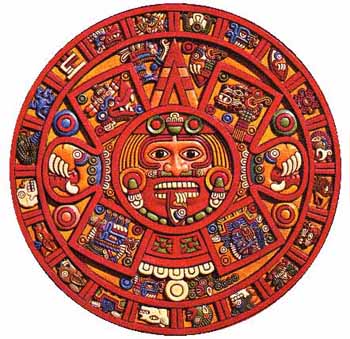Calendar House: Secrets of Time, Life & Power in Ancient Crete's Great Year
Posted on 12/16/2008 3:07:04 PM PST by SunkenCiv
we knew nothing of how Minoan people reckoned the days of the year and the flow of time. No advanced and prosperous society could manage its agriculture, foreign trade and ritual life without a calendar. And yet, till now, little was known except that the 4-year timing of Olympic Games (first recorded in 776 BCE) was based in a much older calendar that began each year at Winter Solstice. This mystery began to be solved in 1972, when American scholar Dr. Charles F. Herberger published The Thread of Ariadne and revealed the Minoan calendar hiding in plain sight -- in the patterns of features, colors and numbers in the decorative border of the famous Toreador or Bull-Leaping Fresco, from Knossos Labyrinth. A review of Herberger's evidences by Harvard University's Dr. Alexander Marshack judged this discovery "valid and valuable," if further questions could be answered. Meanwhile I, studying Minoan Crete for 30 years, was ignorant of all this until I chanced to meet Charles Herberger in 2005.
(Excerpt) Read more at cretegazette.com ...
|
|
|||
Gods |
There's some flakiness to this, IMHO, but definitely have a look. |
||
|
· Discover · Nat Geographic · Texas AM Anthro News · Yahoo Anthro & Archaeo · · The Archaeology Channel · Excerpt, or Link only? · cgk's list of ping lists · |
|||
Does it, perchance, end on 12/21/2012?
Darn complicated.

I have always been interested in ancient Crete but when the article used the term BCE, I immediately assume they are not to be taken seriously.
;’)
Hey, for any Mac users out there, Warren Anderson has updated the Chac program into Mac OS X, which generates cool tiles of Mayan calendar dates from today’s date, or from any date one cares to enter.
Mac OS X version:
http://mac.softpedia.com/get/Math-Scientific/Chac.shtml
http://www.macupdate.com/info.php/id/25773
Classic OS version (I haven’t used the OS X version, only this one):
http://www.tucows.com/preview/205502
http://forums.info-mac.org/search.php?fid[]=94&sid=1d660afcc121d6699f56abd024c84f77
Related, an Aztec calendar program, different author:
http://mac.softpedia.com/get/Dashboard-Widgets/Webcams/Miscellaneous/Aztec-Calendar.shtml
I’ve often wondered how many cultures use a seven day week or a week unit of any number of days in their calendar.
ping for later.
Whoops, pinged the wrong FReeper! Thanks for the (waaaay off topic, but still) graphic.
http://www.freerepublic.com/focus/chat/2149829/posts?page=7#7
Thanks for the post. Will download as soon as I get my new Mac.
That’s a good one. I don’t know. Organized uniform calendars were independently developed in lots of places, then (often) imposed by conquest on other areas, possibly eliminating indigenous calendars about which we know nuttin’. Just the story of the transition to our Gregorian Calendar from the Julian Calendar is pretty convoluted, and that was done by various legislation and decrees.
In *most* of the English-speaking world, the changeover was done in September 1752 (which is why the Framers of the Constitution had two different birthdays :’), which was only 19 days long (Sept 1, 2, 14, etc was the way it was counted) in order to re-sync the calendar with the actual “calendar” of the Earth around the Sun. I can’t find the file, but the analogous conversion began in Roman Catholic countries (but just to be confusing, not all of ‘em, if memory serves) in the 17th century; Sweden (I think it was) changed later, then changed back, then changed back again, and had some extra leap days, a real mess. The last country to change (I think...) was the USSR, as the Russian Empire had steadfastly refused to, meaning that the calendar dates in Russia don’t match for that period of 150 years or so. Wowzo.

It came with a lifetime warantee that expires on 12/21/2012.
They also found a room in Knossos, with butchered children's bones, they called "The Room of Children's Bones." I had a link but I lost it.
Interesting.
I’d be interested in seeing that, if you find it.
Yeah, I’m inclined to think it’s hooey, at least until Minoan is read, that is to say, Linear A is cracked — and it’s apparently not the Greek language hiding in there.

Site of Western Extension to Stratigraphical Museum at Knossos
In a LM IB context in excavations just to one side of the Royal Road some distance northwest of the Little Palace at Knossos, 327 children's bones were found in a burnt deposit in the basement of a building christened the North House.
Originally attributed to between eight and eleven children provisionally aged between ten and fifteen years old, between 21% and 35% of these bones, which included skull fragments as well as other bones, all found in an unarticulated heap, exhibited "fine knife marks, exactly comparable to butchery marks on animal bones, resulting from the removal of meat. Cannibalism seems clearly indicated.
Disclaimer: Opinions posted on Free Republic are those of the individual posters and do not necessarily represent the opinion of Free Republic or its management. All materials posted herein are protected by copyright law and the exemption for fair use of copyrighted works.